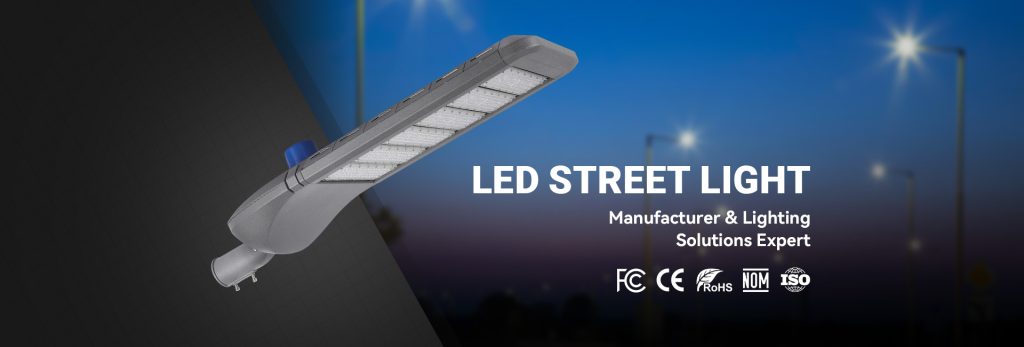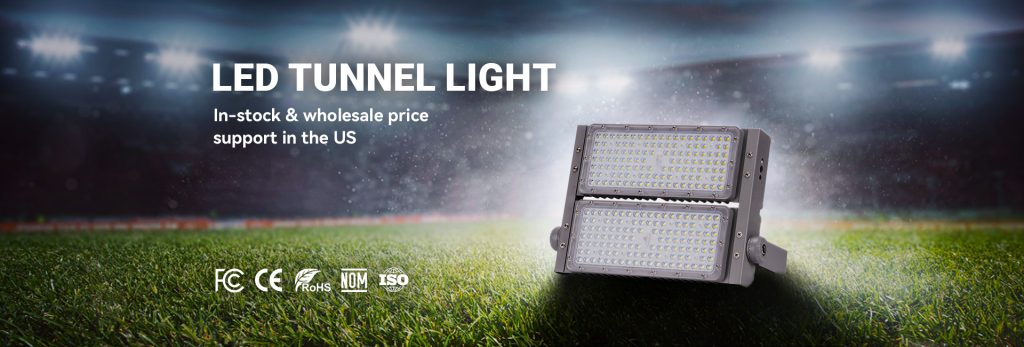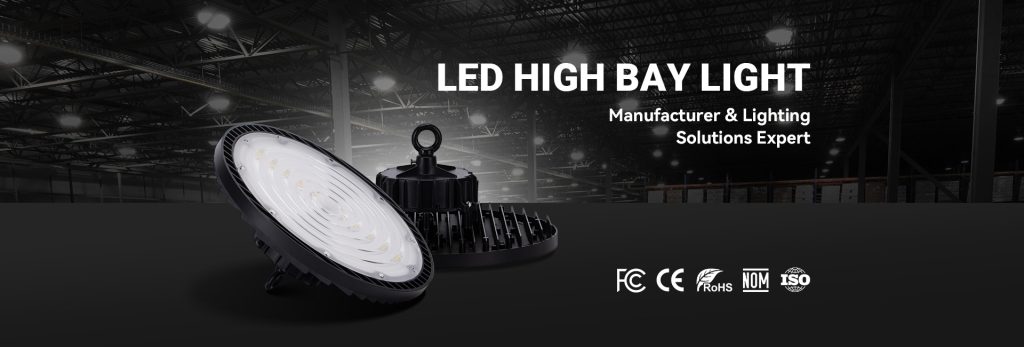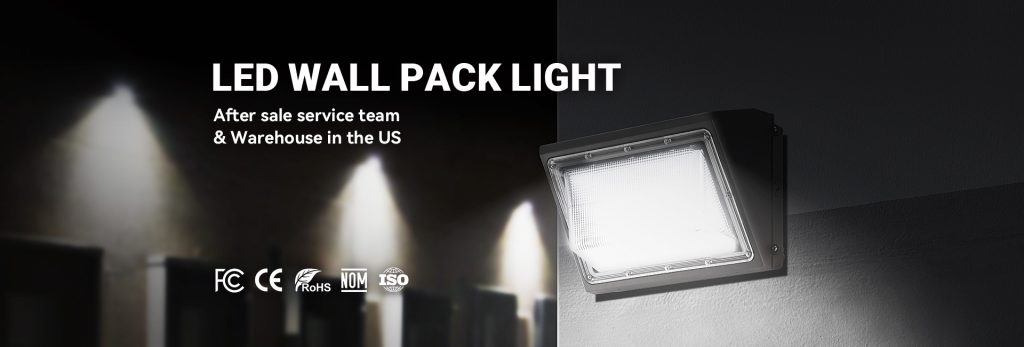How to choose outdoor lighting fixtures?
With the development of science and technology and the improvement of people’s awareness of environmental protection, more and more people choose LED as their lighting choice in the field of outdoor lighting. LED has become an indispensable lighting technology in our life. However, you may still Confused on LED lights, we’ve put together some frequently asked questions to help you explain the main benefits of choosing LEDs for outdoor lighting.
What are Outdoor Lighting Fixtures?
As the name suggests, outdoor lighting fixtures are lamps specially used to illuminate outdoor areas such as streets, parking lots, sports venues, etc. Outdoor lighting is different from indoor lighting because it pays more attention to functionality and safety than aesthetics and fashion, therefore, priority is given to suitable Working environment and safety performance are the first choice for outdoor lighting considerations.
What are the types of outdoor lights? What are the application scenarios?
The varieties and styles of outdoor lighting will not be as diverse as indoor lighting, there are only a few key varieties, each type has its specific purpose, to help you determine which type of outdoor lighting is best for your business, we have compiled The most common outdoor lighting products and application scenarios:
Street lights – mainly used to provide lighting for vehicles and pedestrians on the main traffic road;
Flood light – a wide range of applications, such as billboards, warehouses, underground garages and other applications;
High bay lights – similar to flood lights, mainly installed in warehouses, sports fields and other scenes;
Wall pack lights – generally installed on the exterior walls of houses or buildings, garage doors and other areas;
Canopy lights – generally installed in places that need to operate at night, such as gas stations;
Solar lights – lighting fixtures powered by solar energy, there are many styles to choose from, and the above-mentioned lamps have their corresponding solar lighting solutions.
How long can LED outdoor lighting last?
In terms of lighting, there are three main light sources to choose from – incandescent, fluorescent and LED.
Incandescent bulbs are traditional bulbs with an average lifespan of 1,000 hours, while fluorescent bulbs are an improvement over incandescent bulbs with an average lifespan of about 9,000 hours. LED is the first choice for outdoor lighting, because its good sealing performance can achieve waterproof, lightning protection and other functions. At the same time, its lifespan is much longer, the LED light lasts for an average of 20,000-50,000 hours without turning off, and if the LED light is used for 8 hours a day, it will last for about 17 years.
What are the benefits of LED lighting?
When it comes to outdoor lighting, LEDs are recognized as the most popular for several reasons:
More economical operating costs
Although the purchase cost of LED lamps is higher than other lighting fixtures, its long-term savings in electricity costs make it the most cost-effective choice. LED lights use about 20 percent of the energy of incandescent bulbs to produce light, saving money on electricity bills. Businesses that use LED lighting can also benefit from tax and utility company incentives.
Safer Lighting Environment
Traditional incandescent light bulbs contain toxins such as mercury and chemicals known to be dangerous with long-term exposure. LED lights contain some chemicals and properties, such as lead, but no mercury. LED bulbs are not considered toxic in the US, so they can also be safely recycled.
Healthier lighting spaces
In addition to being safer, LED lights do not have the same adverse health effects as incandescent bulbs. The flicker and noise caused by fluorescent lights can be distracting, making employees uncomfortable and irritated. Additionally, fluorescent lighting has been known to cause severe headaches in some people.
Greener Disposal
LED lights are recyclable in the US, making them an excellent choice for eco-conscious businesses. Plus, LED lights use less energy and have a smaller carbon footprint than businesses using traditional lighting.
More general consumer awareness
Environmentally conscious consumers tend to choose businesses that align with their values. Without sustainability initiatives, some industries, especially those that consume large amounts of energy, would be viewed negatively by consumers. This disconnect between consumers and businesses can lead to lost profits.
What characteristics should be paid attention to when choosing LED outdoor lighting?
When choosing LED outdoor lighting for your business, you need to consider several key features:
Light output
When choosing LED lighting, you need to know how much light output your space requires; this measurement is called lumens. Lumens measure how bright a bulb is, while traditional bulbs are measured in watts, which is the amount of energy used.
Before you start shopping for any lighting fixtures, it’s important to know exactly how much light output your space needs. First, you need to know the size of the area (L x W in feet), then use this lighting layout tool to determine what you need to effectively light the space.
Color temperature
The most popular color temperature options are cool light, daylight, and hard light—the lower the color temperature, the closer the lighting will be to a traditional light bulb. The color temperature of a light bulb is measured in Kelvin; the lower the Kelvin, the more yellow the color.
Here is a quick guide to popular color temperatures: Incandescent bulbs – 2500K to 3500K; Halogen – 2700K to 3500K; Fluorescent – 2700K to 6500K; LED – 2700K to 6500K. For commercial lighting, it is recommended to use products around 4000K.
CRI (Color Rendering Index)
CRI refers to the ability of light to accurately reveal the color of an item compared to natural light. The color rendering index range of LED lights is between 70-95. Commercial lighting in spaces such as factories or auto shops requires color accuracy; therefore, the CRI index is recommended to be above 82, the closer to 100, the better the CRI, and more than 90 is considered excellent.
Installation height
Since it is mainly aimed at the outdoor environment, the installation height of the lamps is also very particular. The higher the installation height, the larger the lighting range of a single lamp, but at the same time, lamps with higher lumens are required, and vice versa. Arrange the installation reasonably High, can reduce installation costs and subsequent operating costs.
Interested in outdoor lighting? Browse through our selection of LED products to find the luminaire that best suits your commercial needs.
If you don’t know which styles you need or still have questions, please contact us directly, our engineers will customize a lighting solution for you, and look forward to cooperating with you.
Related links:
https://en.wikipedia.org/wiki/Lumen_(unit)
https://www.e-conolight.com/blog/post/commercial-led-lighting-buying-guide





